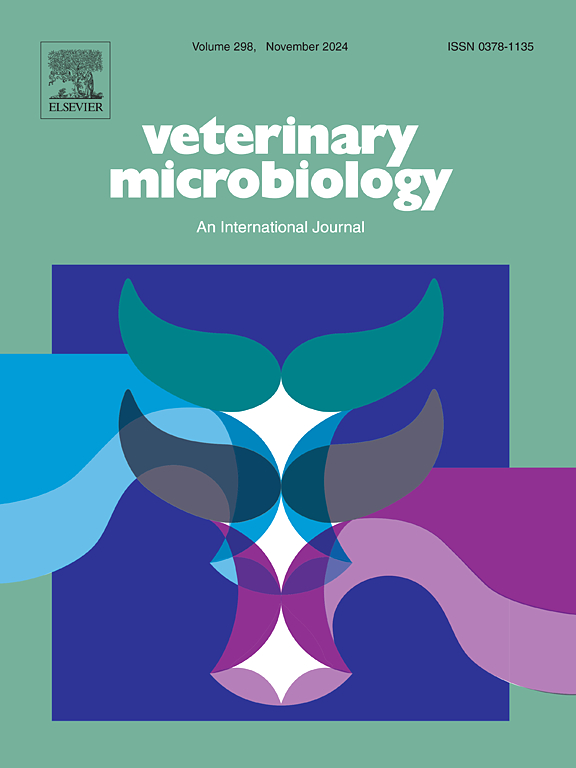Antimicrobial resistance patterns and biofilms resurgence ability of Escherichia coli associated with commercial layer chicken farms in Sri Lanka
IF 2.4
2区 农林科学
Q3 MICROBIOLOGY
引用次数: 0
Abstract
This study aims to understand antimicrobial resistance (AMR) associated with planktonic and biofilm-forming bacteria in Sri Lankan chicken industry. Planktonic or biofilm-forming Escherichia coli were isolated from different sources in layer chicken farms and their AMR profiles were determined. Minimum inhibitory concentrations (MICs) of selected antibiotics were quantified against planktonic E. coli isolated from water. Minimum biofilm inhibitory/eradication concentrations (MBIC/MBEC) of tetracycline were determined for biofilm E. coli. Faecal E. coli demonstrated highest resistance to tetracycline (64 % of isolates). Biofilm-derived planktonic E. coli showed greater resistance to antibiotics than planktonic E. coli (75 % vs 62.5 %). The MBIC and MBEC of tetracycline in E. coli biofilm phenotype were significantly greater than MIC of planktonic phenotype of the same isolate (P < 0.05). This study highlights the importance of eliminating biofilms in chicken industry as biofilm-forming bacteria isolated from drinkers demonstrated a significantly greater AMR and can act as a source of AMR dissemination.
求助全文
约1分钟内获得全文
求助全文
来源期刊

Veterinary microbiology
农林科学-兽医学
CiteScore
5.90
自引率
6.10%
发文量
221
审稿时长
52 days
期刊介绍:
Veterinary Microbiology is concerned with microbial (bacterial, fungal, viral) diseases of domesticated vertebrate animals (livestock, companion animals, fur-bearing animals, game, poultry, fish) that supply food, other useful products or companionship. In addition, Microbial diseases of wild animals living in captivity, or as members of the feral fauna will also be considered if the infections are of interest because of their interrelation with humans (zoonoses) and/or domestic animals. Studies of antimicrobial resistance are also included, provided that the results represent a substantial advance in knowledge. Authors are strongly encouraged to read - prior to submission - the Editorials (''Scope or cope'' and ''Scope or cope II'') published previously in the journal. The Editors reserve the right to suggest submission to another journal for those papers which they feel would be more appropriate for consideration by that journal.
Original research papers of high quality and novelty on aspects of control, host response, molecular biology, pathogenesis, prevention, and treatment of microbial diseases of animals are published. Papers dealing primarily with immunology, epidemiology, molecular biology and antiviral or microbial agents will only be considered if they demonstrate a clear impact on a disease. Papers focusing solely on diagnostic techniques (such as another PCR protocol or ELISA) will not be published - focus should be on a microorganism and not on a particular technique. Papers only reporting microbial sequences, transcriptomics data, or proteomics data will not be considered unless the results represent a substantial advance in knowledge.
Drug trial papers will be considered if they have general application or significance. Papers on the identification of microorganisms will also be considered, but detailed taxonomic studies do not fall within the scope of the journal. Case reports will not be published, unless they have general application or contain novel aspects. Papers of geographically limited interest, which repeat what had been established elsewhere will not be considered. The readership of the journal is global.
 求助内容:
求助内容: 应助结果提醒方式:
应助结果提醒方式:


